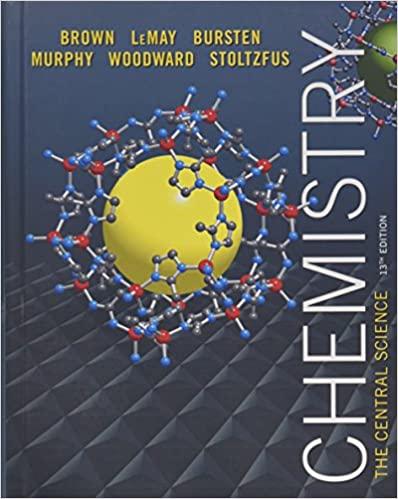Question
A chemist attempted to complete the Diels-Alder procedure as described in the handout for this experiment. However, the reaction produced a lower than expected yield.
A chemist attempted to complete the Diels-Alder procedure as described in the handout for this experiment. However, the reaction produced a lower than expected yield. By analyzing the chemist's notebook entry shown below, identify the most likely cause of the loss in yield. "181 mg of anthracene and 101 mg of maleic anhydride were placed into a dry 20 cm test tube. Some of the solid adhered to the sides of the test tube, possibly from static. 2 mL of xylenes were added to the tube. Most of the solid was successfully rinsed down to the bottom of the tube, but not all of it. Therefore, 2 additional mL of xylenes were added in order to rinse the remaining material down to the bottom of the tube. A boiling chip was added, and the initial liquid level was marked on the side of the tube with a marker. At this point, the solution had a slight yellow color, and not all of the solid had dissolved. The test tube was placed into a heating mantle that was plugged into a VARIAC set to 75%. Once a reflux ring was observed approximately 1/3 of the way up the tube, a timer was set, and the reaction was allowed to reflux for 1 hour. Near the beginning of the reflux, all of the solid material dissolved, and the color of the solution turned to a darker yellow. After 1 hour, the heating mantle was lowered, and the clear, golden solution in the test tube was allowed to cool. As the temperature decreased, more and more solid came out of solution-- primarily in a cluster on the boiling chip. Once the solution returned completely to room temperature, the solid was collected by suction filtration. Small portions of petroleum ether were used to rinse all of the solid out of the test tube and to wash the crystals on the filter paper. The boiling chip was removed, and the solid was allowed to sit for 10 minutes to allow the petroleum ether to fully evaporate. The pale yellow, crystallize solid that was collected was weighed. 140 mg of product were obtained. The melting point range of the solid was determined using the capillary tube method and a Mel-Temp apparatus set to 5. The observed melting point range was 262 to 266 C."
A. A boiling chip was not added.
B. The reaction temperature was too low.
C. The reaction temperature was too high.
D. The concentration was too low because too much xylenes was added.
Step by Step Solution
There are 3 Steps involved in it
Step: 1

Get Instant Access to Expert-Tailored Solutions
See step-by-step solutions with expert insights and AI powered tools for academic success
Step: 2

Step: 3

Ace Your Homework with AI
Get the answers you need in no time with our AI-driven, step-by-step assistance
Get Started


